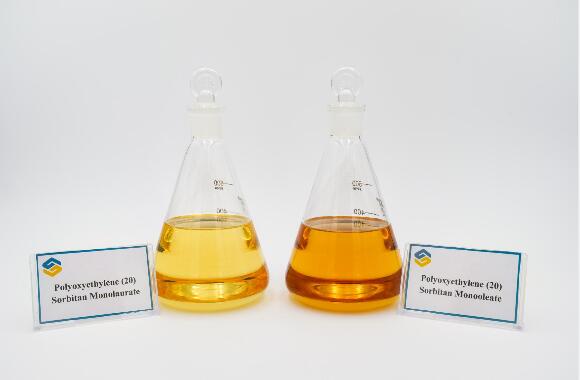Differences between polysorbate 20 and polysorbate 80
(2024年04月06日)https://www.huanachemical.com/differences-between-polysorbate-20-and-polysorbate-80.html
What Is the Difference Between Polysorbate 20 and 80?
ynthetic Raw Materials Difference between Polysorbate 20 and 80
Polysorbate 20 is a product of the polymerization reaction of sorbitan monolaurate and ethylene oxide, while polysorbate 20 or 80 is synthesized by the polymerization of sorbitan monooleate and ethylene oxide.
Application Difference between Polysorbate 20 80
Polysorbate 20 is known as a non-ionic stain remover because it has relatively more hydrophilic groups (polyoxyethylene), which gives it a strong hydrophilicity property. Polysorbate 20 is usually used as an oil-in-water(O/W) type emulsifier and solubilizer.
Polysorbate 80 is one of the most common polysorbates. The polysorbate 80 emulsifier has significant resistance to electrolyte and strong hydrophilicity, which allow it to be widely used in liquid, semisolid and solid preparations. Polysorbate 80 is used as an oil-in-water(O/W) type emulsifier, solubilizer, wetting agent, dispersant, and stabilizer.
Appearances and Properties Difference between Polysorbate 20 and 80
Polysorbate 20 is a yellow to orange oily liquid, which has a faint odor and a slightly bitter taste. It contains relatively more hydrophilic groups, which allows it to be soluble in water, methanol, ethyl acetate, and toluene(methylbenzene) and insoluble in mineral oil and vegetable oil.
Polysorbate 80 is a light yellow to orange-yellow viscous liquid, which tastes slightly bitter and astringent. It's soluble in warm water, methanol, ethyl acetate, and very slightly dissolvable in mineral oil.
If you want to know more about polysorbate 20 use, please visit our website.
More details of nonionic surfactant list, please leave us a message.
Ethoxylated sorbitan esters and Polysorbates as nonionics offer many advantages over ionic surfactants including increase stability, enhance flexibility and provide wider compatibility. They are stable in mild acids, alkalis and electrolytes and do not react with ionic ingredients or actives. They are used as emulsifiers, foamers, defoamers, dispersants, lubricants, solubilizers, stabilizers, viscosifiers, diluents, wetting agents etc.
- このできごとのURL:


コメント